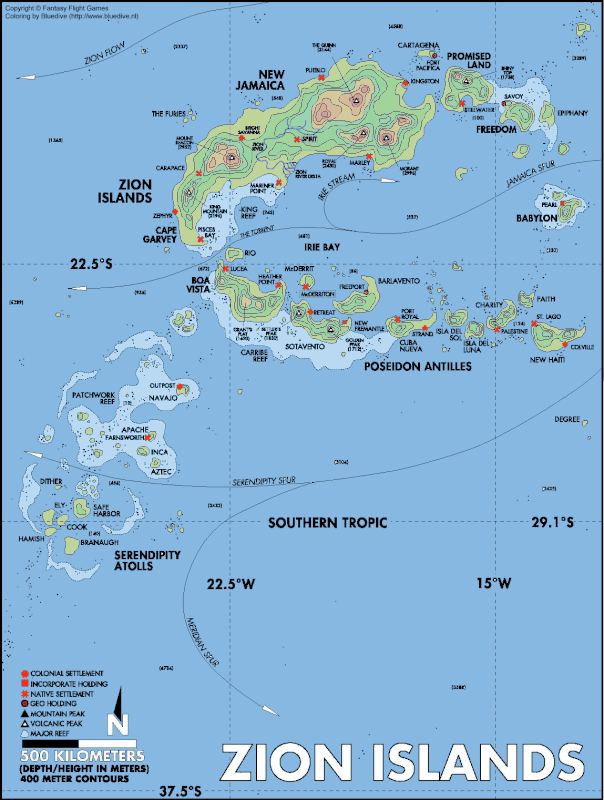Mar 31, 2022 11:17 pm
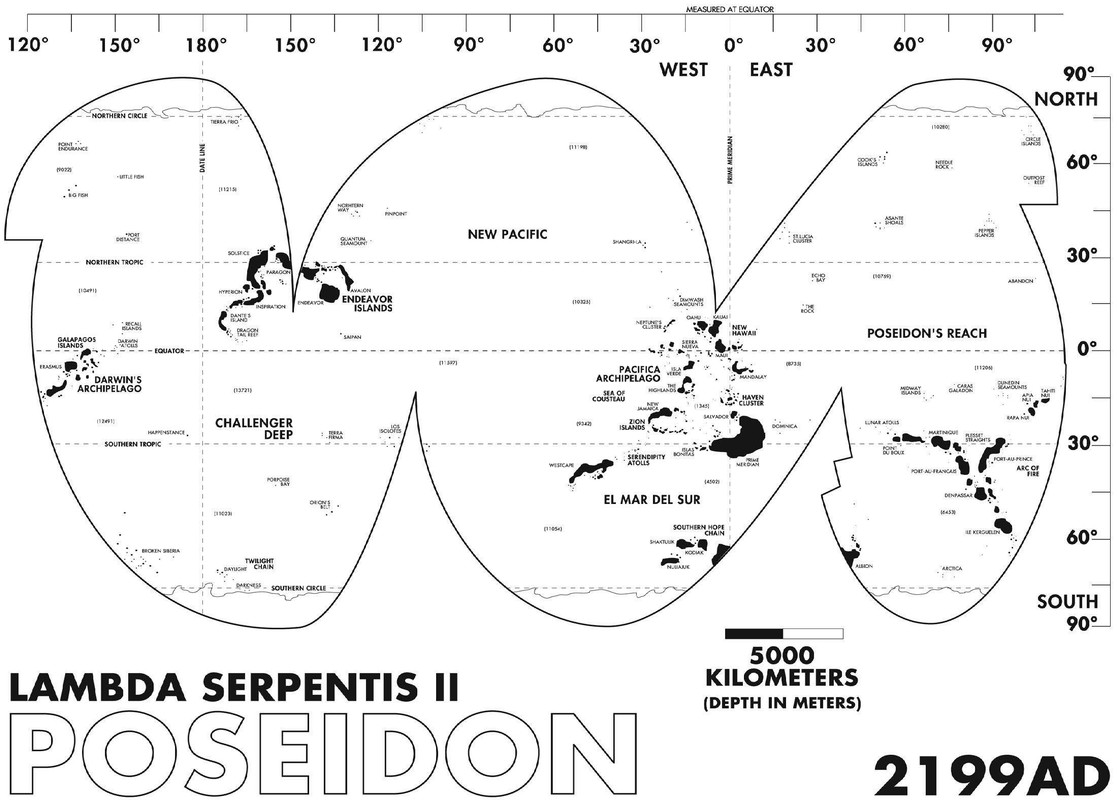
Lamba Serpentis II, better known as "Poseidon," is an ocean world with a surface comprised of 97% water and only 3% exposed land. The existing dry land takes the form of thousands of tiny archipelagos and volcanic island chains, with only a few large landmasses. Many of these islands are hundreds, if not thousands, of kilometers apart.
Poseidon has uncanny similarities to Earth in terms of size, atmosphere, gravity, and density. The planet's orbit is only slightly wider than Earth's, which makes each day a little longer (roughly 30-hour days) and extends the length of its year by 13.5% (a year on Poseidon is roughly 413 days). Furthermore, the planet's surface gravity is slightly stronger than Earth's, and the atmosphere has a few minor differences in trace elements, which most humans claim gives the air on Poseidon a distinct smell.
Poseidon Statistics
Circumference: 43,121 km
Rotation: 30.012 Standard Hours
Year: 413.2 Standard Days
Gravity: 1.08g
Avg Surface Pressure: 1.30 atm
Dry Surface Area: 3%
Poseidon's Orbit
Poseidon has twin moons. The nearest moon, Proteus, is a massive planetoid more than 7,000 km in diameter with a relatively dense atmosphere and more than half a g of surface gravity. The moon has some native fungal life and natural resources, making it the site of a trading station/manufacturing center and small orbital station.
Nereus is Proteus' little brother; a much smaller planetoid which was discovered to have huge deposits of ore. As such, the moon is home to a number of important mining and refining centers, as well as research stations.
Directly orbiting Poseidon are Prosperity Station and GEO-1. Both space stations are civilian and military facilities used to process incoming visitors from the wormhole. Also in the ocean planet's orbit is the satellite network that forms Poseidon's communications and information infrastructure.
The Pacifica Archipelago
[ +- ] Map of the Pacifica Archipelago
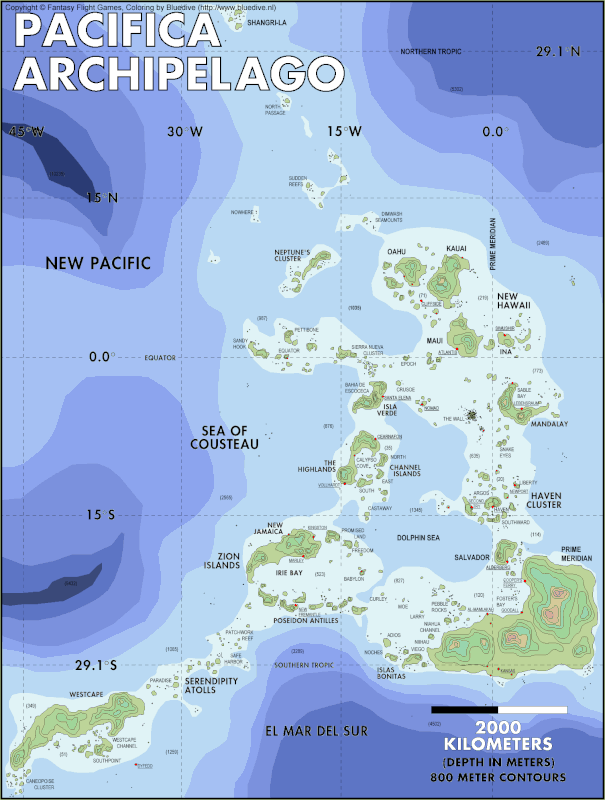
Pacifica straddles Poseidon's equator, so the prevailing climate is warm and wet, with tropical and subtropical ecosystems throughout. Heavy rainfall and bright sun support densely vegetated forests almost everywhere, but local conditions often conspire to create other biomes. Some islands are host to savannas or coastal deserts, others to swamps or high sea cliffs, and others still to snow-capped mountains. The oceans surrounding the islands are uniformly deep, but the waters of the archipelago are relatively warm and shallow. The local waters support rich and productive ecologies, as well as almost endless coral reef systems.
Most of the archipelago's larger islands are in the planet's southern hemisphere. It is here that Haven, the first and largest colonial settlement on Poseidon, can be found, in addition to a number of other major settlements, making Pacifica the center of civilization for the planet. Rich fishing grounds, fertile land, and plentiful natural resources have made Pacifica the logical choice for human habitation.
Regions of the Pacifica Archipelago
The Haven Cluster
[ +- ] Map
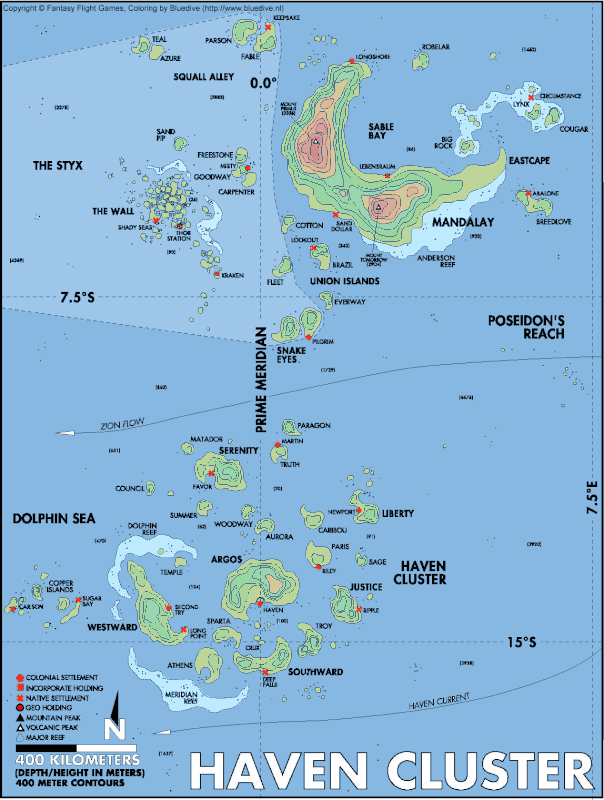
The Haven Cluster was the first region settled on Poseidon, and it continues to be the center of colonial life. Most colonial settlements in this area are large modern towns, though there are a high number of tiny native villages, as well. The island of Argos is home to the City of Haven, which is Poseidon's largest and oldest colony. Haven has over 500,000 residents (roughly 25% of Poseidon's population) and serves as the administrative capitol of the planet.
Prime Meridian
[ +- ] Map
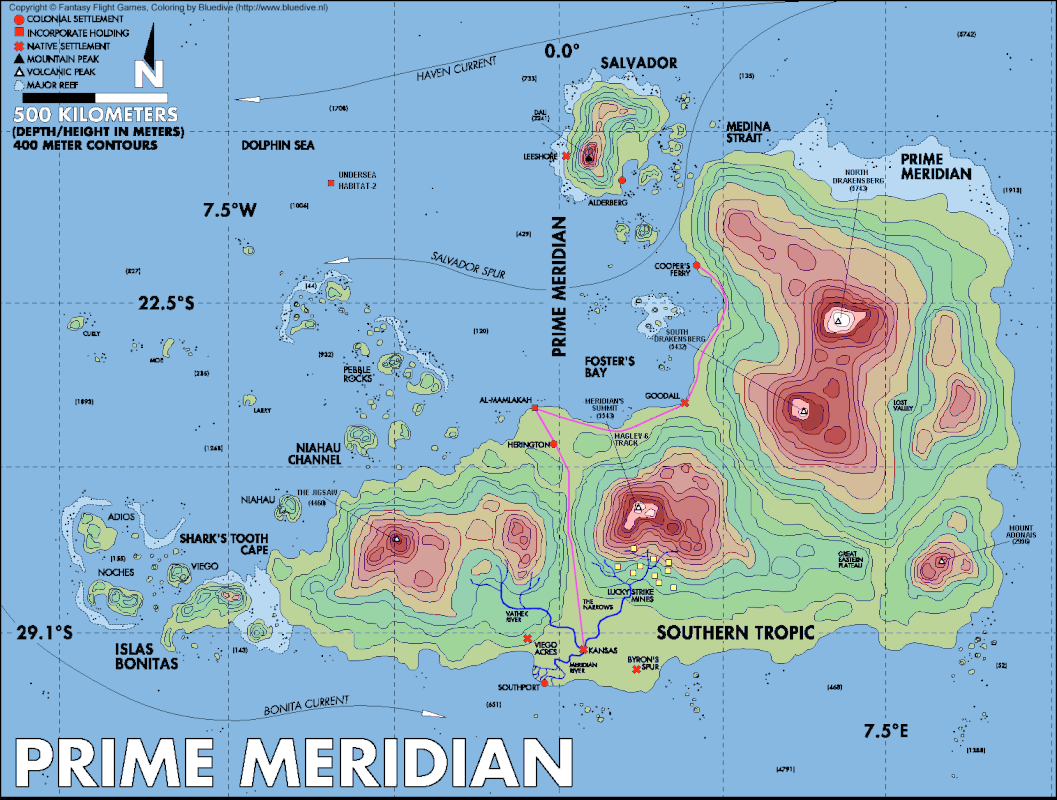
The region's mostly subtropical climate allows for a year-round growing season. As such, its grasslands are dotted with farms and ranches. The largest settlement in the area is al-Mamlakah, which is home to 35,000 people.
Northwest Territories
[ +- ] Map
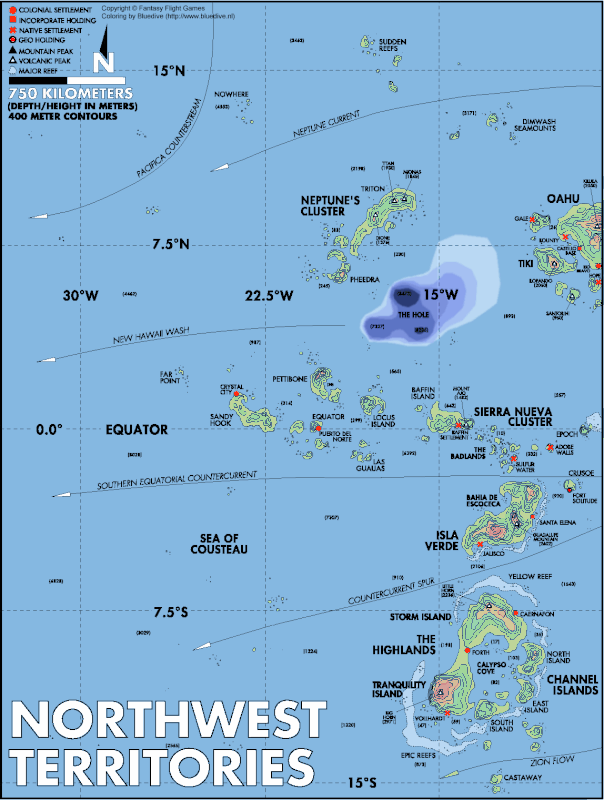
Most of the islands experience very little seasonal change and high annual rainfall, and a significant number have active volcanoes, as well. The heat, storms, and volcanic activity all serve to make the Northwest Territories one of the least hospitable regions of Poseidon. Though the area was sparsely populated for most of its history, the discovery of Long John has attracted increasing numbers of settlers and Incorporate agents, resulting in several Incorporate "company towns" springing up in recent years.
The Northwest Territories are perhaps best known for being the location of the Sierra Nueva Cluster - a group of islands populated by especially hostile natives. These tribes are among the most warlike on Poseidon, and the Sierra Nueva has become a battleground between local natives, the GEO, and Incorporate interests.
Westcape
[ +- ] Map
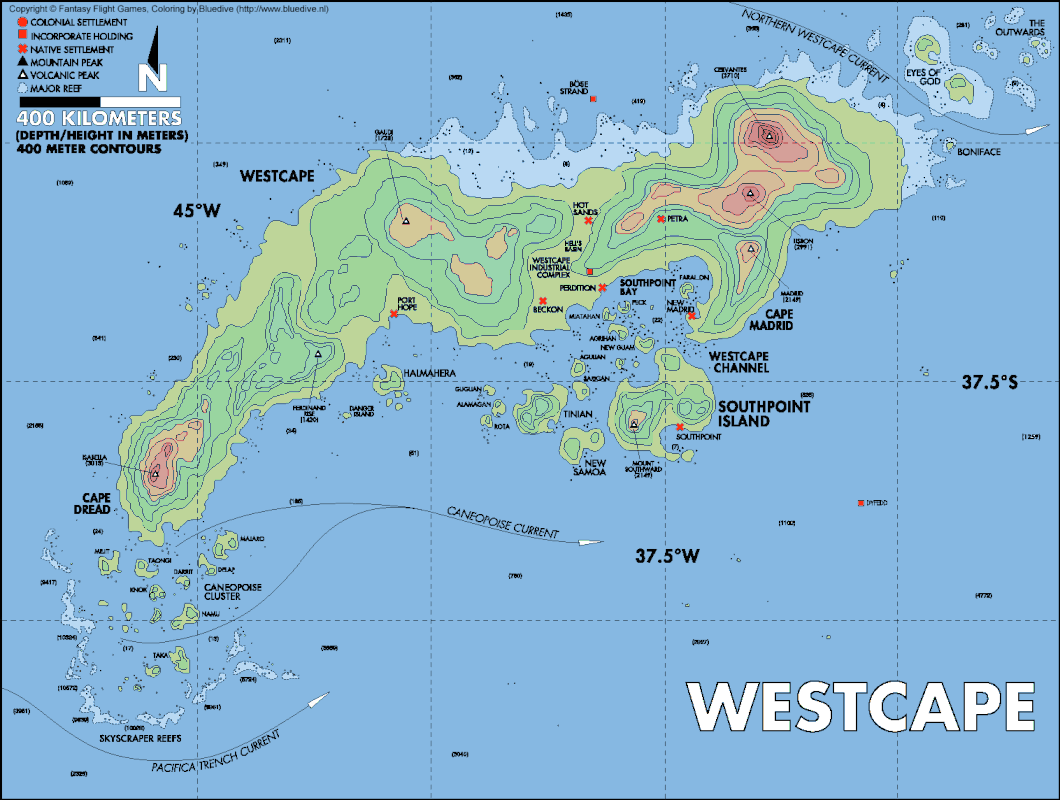
New Hawaii
[ +- ] Map
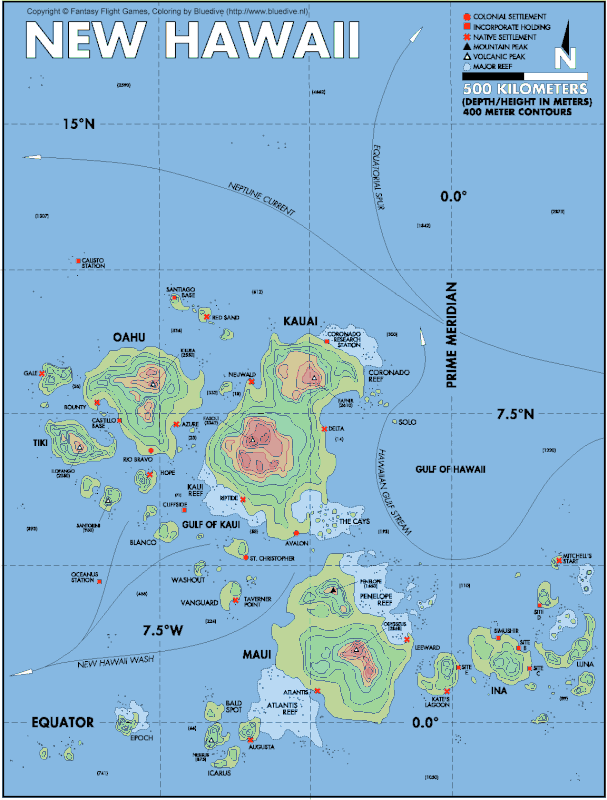
Zion Islands
[ +- ] Map
